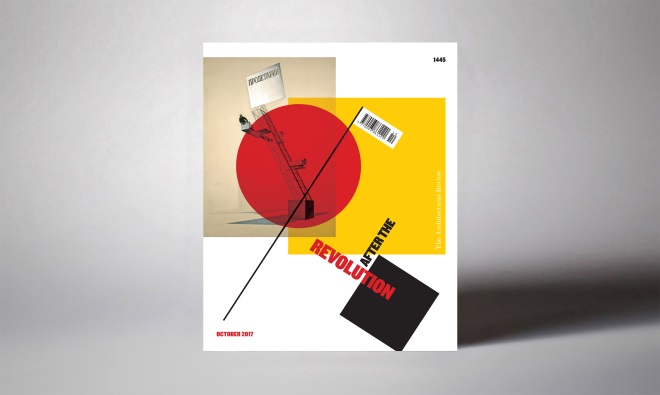Social Condenser | Narkomfin | Program 200 | Alexander Brodsky | Alexey Ginzburg | DK-CM | Sergey Gnedovsky | Nowadays | El Lissitzky
20170918 cover ar after the revolution
Click here to order a copy of the After the revolution issue now
In 1917, Russia rejected the old autocracy of the Tsars, and the Soviet Union was born. One hundred years on, The Architectural Review examines the life and legacy of revolution and how it has shaped architecture today.
El Lissitzky was insatiably preoccupied with what form revolution should take, and Owen Hatherley argues that revolution is written into the streets of the city of three revolutions – St Petersburg. In this month’s Notopia edition, Reinier de Graaf argues that at least one major revolution in architecture is presented each year, and yet the four walls, floor and ceiling of the box are inevitable, while Jeremy Melvin asks whether architecture can ever be revolutionary. And as Russia commemorates its own revolution, Jonathan Glancey looks back at Finland’s entwined history as the country celebrates one hundred years of independence.
Fuelled by the idea that life could be shaped by design, the social condenser is one of the most enduring legacies of Soviet Russia, the most famous of which is the legendary Narkomfin. Designed by Moisei Ginzburg in 1930, the unexpected inspiration and detailed testing and research behind the Narkomfin are laid bare in the first English translation of Ginzburg’s Dwelling from 1934. While pending restoration plans promise to save the Narkomfin from years of decay, Michał Murawski laments the imminent demolition of thousands of Khrushchev-era homes – arguably the greatest social condensers of all time.
In contrast to this wholesale destruction, the Izvestia building on Moscow’s Pushkin Square has been lovingly restored to its previous Constructivist glory, while the controversial programme to build 200 churches in 10 years recreates figments from Russia’s religious past on street corners around Moscow. The projects of emerging Russian practice Nowadays search for ‘Moscowness’ in the historic buildings of this city of contradiction, and the intersecting walls of the Kulikovo Polye Museum, carved out of an ancient battlefield, physically embody the collision of old and new.
Exploring Russia outside the city, DK-CM intrepidly peek behind the tall walls of Dachaland to explore the secret world of allotments and the incremental growth of the dacha on the fringes of the city, while the work of Alexander Brodsky, treading the invisible line between art and architecture, adds sheds of classicism to sheds for dissent and debate.
Click here to visit The Architectural Review’s online store
If you are a subscriber, click here to sign in and read digital editions of the magazine – they are under My Account
 The Architectural Review An online and print magazine about international design. Since 1896.
The Architectural Review An online and print magazine about international design. Since 1896.


